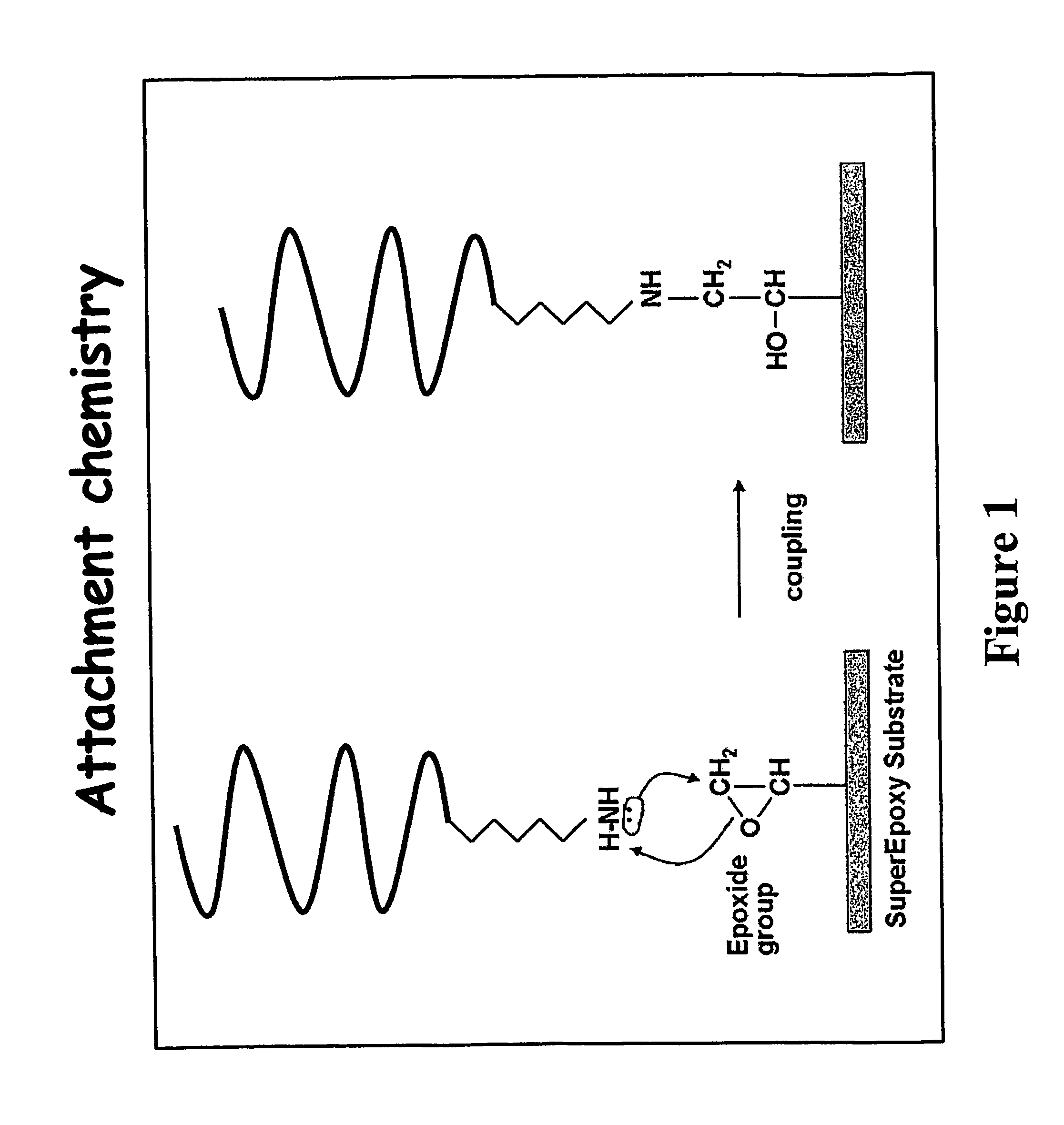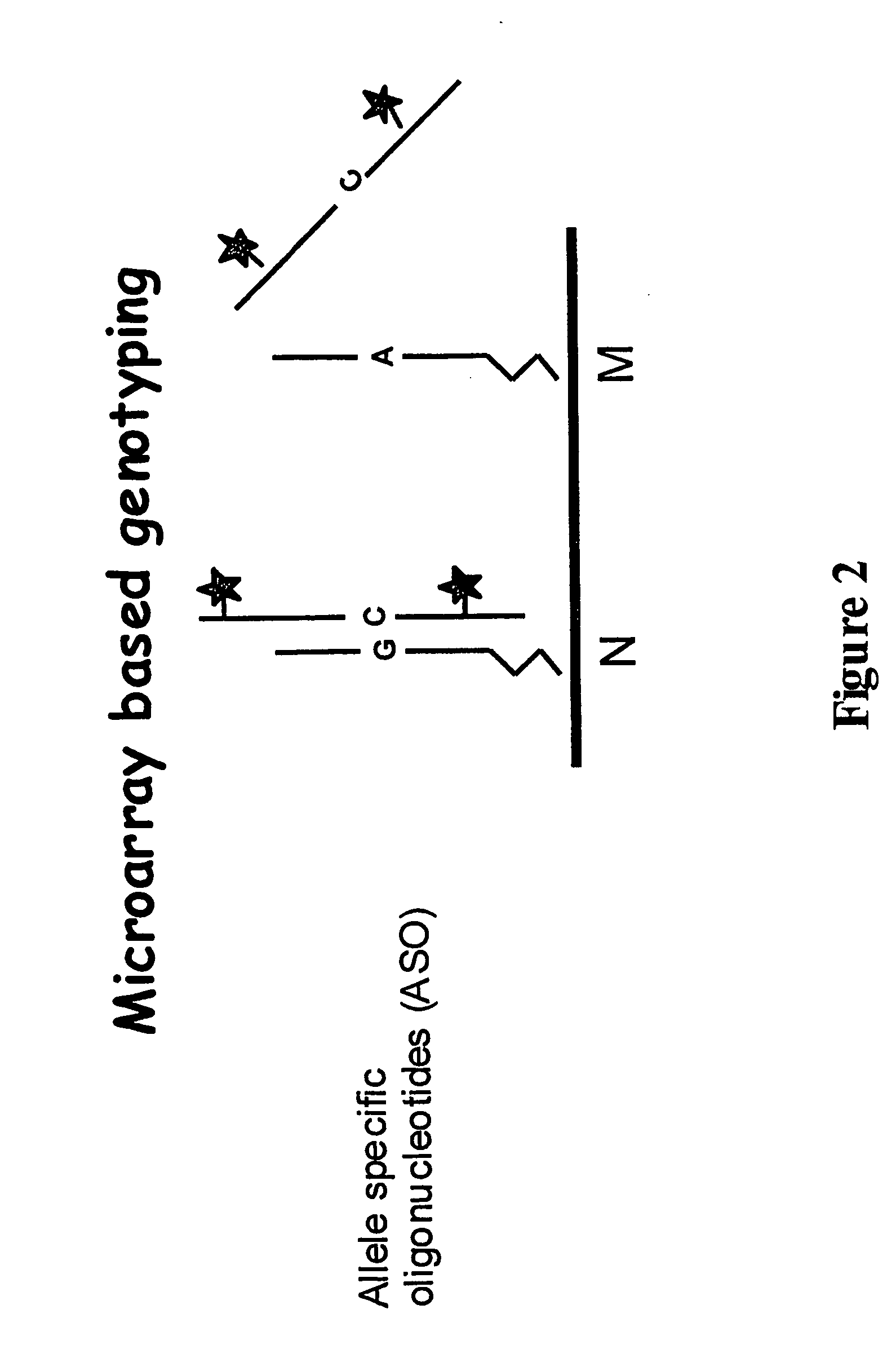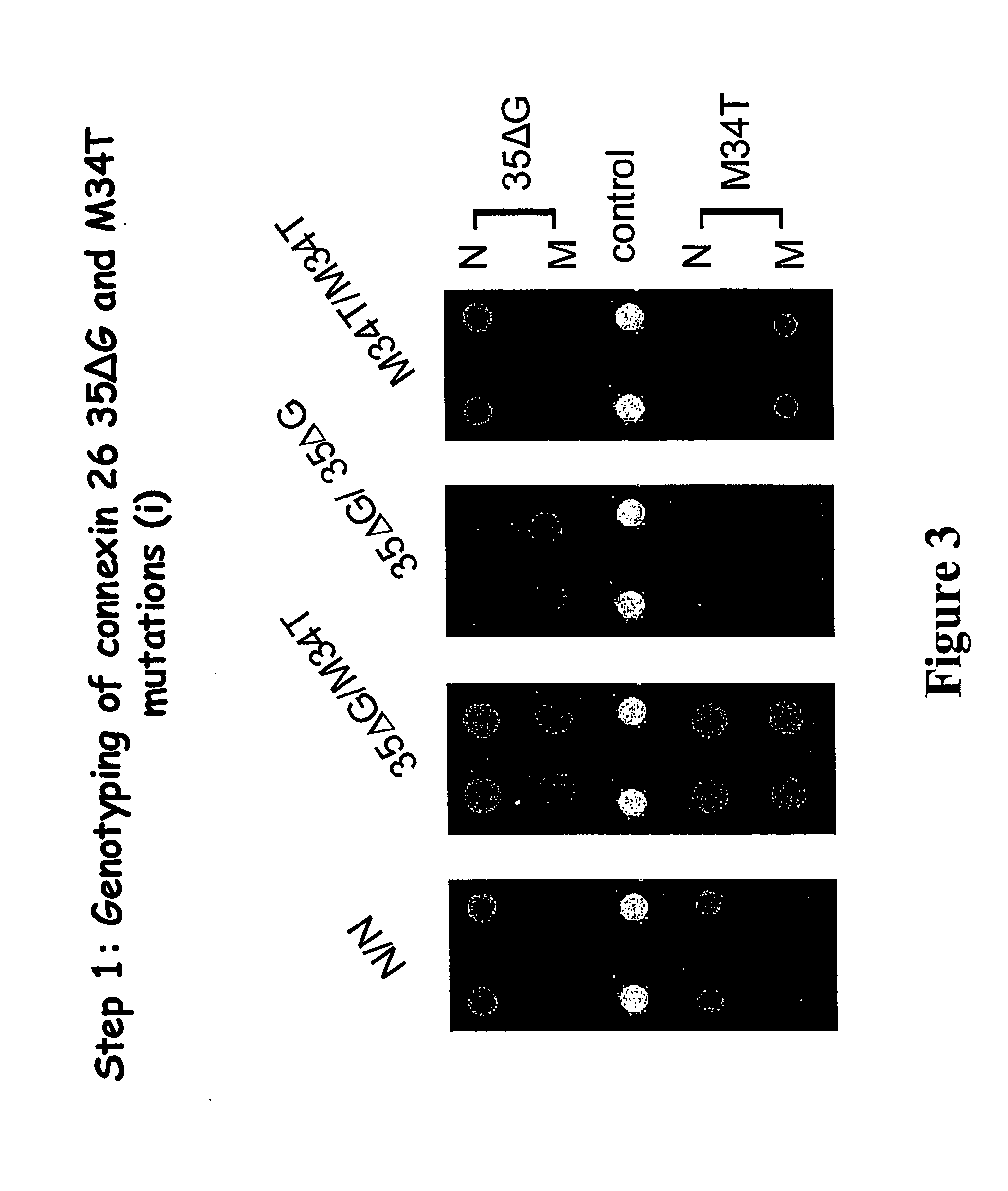Genotyping of deafness by oligonucleotide microarray analysis
a technology of oligonucleotide microarray and gene expression, applied in the direction of microorganism testing/measurement, sugar derivatives, biochemistry apparatus and processes, etc., can solve the problems of time-consuming and expensive analysis of multiple genes by conventional gel-based methods
- Summary
- Abstract
- Description
- Claims
- Application Information
AI Technical Summary
Benefits of technology
Problems solved by technology
Method used
Image
Examples
example 1
DNA Preparation
[0119] 1. Amplify patient DNA in three PCR reactions containing primer mixes 1, 2 and 3 (Table 35) according to Table 4:
TABLE 4PCR reaction mixturesVOLUMECONTENTxμl1(50 ng) patient DNA2.5μl10× Taq buffer2.5μl10× primer mix2.5μl10× nucleotide labeling mix0.5μlTaq polymeraseyμl2dH2O25μl
1volume required to provide 50 ng of DNA
2volume required to make up to 25 μl
[0120] PCR is one cycle of denaturation for 5 min at 94° followed by 40 cycles of denaturation for 30 s at 94° C., annealing for 30 s at 58° C. and extension for 30 s at 72° C., followed by a final extension step for 5 min at 72° C. [0121] 2. Take 5 μl of each reaction for gel analysis (optional), pool the remaining DNA into one tube and purify on a Qiagen MinElute column according to the manufacturer's instructions. Elute in 12 μl 10 mM Tris-Cl pH 7.5. [0122] 3. Add 3 μl 5×T7 gene 6 exonuclease buffer and 0.5 μl T7 gene 6 exonuclease. Incubate 20 min at 37° C., then heat inactivate at 90° C. for 10 min.
[012...
example 2
Hybridization and Labeling
[0127] 1. Add 5 μl pooled ss PCR products to 5 μl hybridization buffer. Mix thoroughly. [0128] 2. Denature 5 min at 90° C. [0129] 3. Snap cool hybridization mix on ince. [0130] 4. Touch spin to collect condensate and pipette 10 μl hybridization mix onto a clean coverslip. Lower the measuring region of the chip onto the coverslip and let the hybridization mix spread to the edges of the coverslip. [0131] 5. Put the clip into a hybridization cassette containing 2×SSC in the humidification wells and incubate in a 45° C. water bath for 30 min.
[0132] 6. Wash chip at 45° C. in the following sequence:
2× SSC / 0.1% w / v SDS3 min0.5× SSC / 0.1% w / v SDS5 min2× SSC1 min4× SSC / 0.2% w / v Tween1 min.[0133] 7. Let chip drain briefly but do not allow to dry out. Pipette 12 μl streptavidin-Cy5 diluted 1:250 in blocking solution onto a coverslip, avoiding bubbles. Lower the measuring region of the chip onto the coverslip and let the solution spread to the edges of the coverslip...
example 3
Scanning and Analysis
[0140] 1. Scan the chip in a standard microarray scanner using the red Cy5 channel (635 nm). [0141] 2. Quantitate spot intensities using the scanner software. At this time, visually inspect the array and exclude any “bad” spots (e.g. poor printing or hybridization, contamination by dust particle, etc.). [0142] 3. Import results into Excel. Using the background, subtract median pixel intensity as your Spot Value (SV), calculate the Genotype Index (GI) for each normal and mutant spot pair.
GI=SVN / (SVN+SVM) [0143] where SVN=normal Spot Value and SVM=mutant Spot Value [0144] 4. Average GI values for replicate spot pairs and use to call genotype for each mutation.
PUM
| Property | Measurement | Unit |
|---|---|---|
| length | aaaaa | aaaaa |
| genetic heterogeneity | aaaaa | aaaaa |
| frequency | aaaaa | aaaaa |
Abstract
Description
Claims
Application Information
 Login to View More
Login to View More - R&D
- Intellectual Property
- Life Sciences
- Materials
- Tech Scout
- Unparalleled Data Quality
- Higher Quality Content
- 60% Fewer Hallucinations
Browse by: Latest US Patents, China's latest patents, Technical Efficacy Thesaurus, Application Domain, Technology Topic, Popular Technical Reports.
© 2025 PatSnap. All rights reserved.Legal|Privacy policy|Modern Slavery Act Transparency Statement|Sitemap|About US| Contact US: help@patsnap.com



